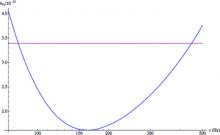
Abstract
A strategy is devised for a semicoherent cross-correlation search for a young neutron star in the supernova remnant SNR 1987A, using science data from the Initial Laser Interferometer Gravitational Wave Observatory (Initial LIGO) and/or Virgo detectors. An astrophysical model for the gravitational wave phase is introduced which describes the star’s spin-down in terms of its magnetic field strength B and ellipticity ε, instead of its frequency derivatives. The model accurately tracks the gravitational wave phase from a rapidly decelerating neutron star under the restrictive but computationally unavoidable assumption of constant braking index, an issue which has hindered previous searches for such young objects. The theoretical sensitivity is calculated and compared to the indirect, age-based wave strain upper limit. The age-based limit lies above the detection threshold in the frequency band 75 ≲ν≲ 450 Hz. The semicoherent phase metric is also calculated and used to estimate the optimal search template spacing for the search. The range of search parameters that can be covered given our computational resources (∼109 templates) is also estimated. For Initial LIGO sensitivity, in the frequency band between 50 and 500 Hz, in the absence of a detected signal, we should be able to set limits of B≳ 1011 G and ε≲ 10−4.